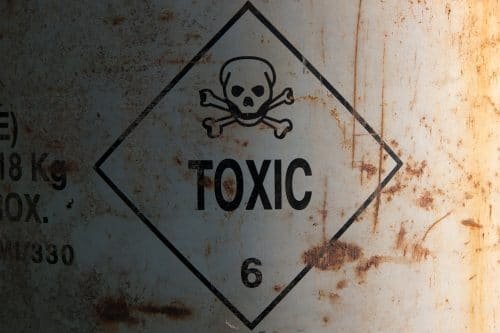Learn how to secure compensation for injuries or illnesses caused by chemical exposure

When an individual is exposed to a toxin and develops an injury or illness as a result, it may be possible to secure compensation through a specific kind of personal injury lawsuit known as a toxic tort. For example, a toxic tort may be possible if:
- A company illegally released toxins that contaminated the groundwater, soil, or air
- A worker was exposed to a toxin at work
- A landlord failed to warn a tenant about lead paint, mold, or asbestos
- A manufacturer knowingly sold a product that made people sick
Essential Points to Prove in a Toxic Tort Case
In order to win a toxic tort case, the plaintiff needs to prove four key points:
- The at-fault party owed the injured party a legal duty. For example, a landlord has a duty to provide tenants with a safe and habitable environment, a drug company has a duty to warn consumers of potential side effects of their products, and a chemical plant has a duty not to contaminate the community’s soil or groundwater.
- This legal duty was breached. Typically, all that is needed to establish a breach of duty is to show that a reasonable party would have been more careful than the at-fault party. Then, the claim can proceed based on negligence.
- The breach of duty caused the plaintiff harm. This is by far the most difficult step to prove in any kind of toxic tort case, because it involves proving that the at-fault party’s actions directly caused the plaintiff’s injury or illness. The challenge arises from the fact that many medical conditions related to toxic exposure can take years to develop and are very difficult to trace back to one single cause. Some types of evidence that can be used to help prove a breach of duty caused harm include:
-
- Clear medical testimony linking the toxin and the specific illness the plaintiff developed
- Evidence that proves exposure occurred—such as photos of mold or records showing illegal dumping by a company
- FDA warnings or recall notices for dangerous drugs or products
- Studies showing a high incidence of similar medical conditions in people who were exposed to the same type of toxin
-
- The extent of the harm. Finally, the plaintiff needs to show how much harm they suffered and how much compensation they deserve.
Need Advice About a Toxic Tort?
If you suspect that toxic exposure has caused you or a loved one to become seriously ill, The Law Offices of Larry H. Parker can help. After over 40 years of experience, we’ve developed significant expertise in these kinds of cases. For example, we handle cases related to mesothelioma from asbestos exposure, ovarian cancer from talcum powder, defective drugs, and work-related chemical exposure. We’ll be happy to answer your questions during a free initial consultation. Simply call 800-333-0000 now.



